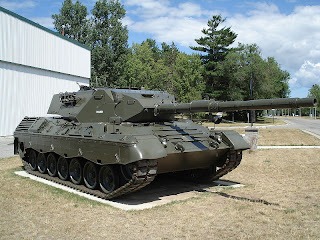Modeling the desert scene was probably the most important yet most difficult to achieve. There was great controversy within the group how the the landscape should look as well as its feasibility during render time. I proposed that the scene itself be modeled exclusively in Zbrush as I would be able to produce more realistic and detailed results. Although the quality of the models would be superior to other programs the polygon count would be astronomical. We may have problems when it came to rendering the scenes.
I started off by modeling the sand terrain on a disc plain. I used desert images as reference so I could replicate realistic mountains and sand dunes using custom alpha channels I created. I created these alpha channels using photoshop images which I sourced from the internet.
Once I was happy with the basic form of the terrain I then started work on the rock layer which I created using a 3d disc which I inserted underneath the sand layer. By using the subtools option in zbrush I would be able to create separate objects which would be fundamental when it came to texturing. Rather than texturing one plain where I would have to match the texture to the various components, I would texture each component individually. This would make texturing much easier and the overall finish would be more precise.
I was very pleased with the level of detail as well as the the quantity of polygons I was able to work with. I created the scene using a sub division level of seven which should work in maya. It was difficult to get realistic mountains protruding from the sand layer in zbrush, however I persevered using an alpha channel I created which created rocky outcrops. My main worry when creating the scene was creating realistic rocks and mountains. If the mountains were smoothed the rocky effect would be lost.
I knew I couldn't exceed the sub division level of 7. This would cause maya to crash and rendering the scene would be impossible. I had to realize that there were certain rules the model had to abide by otherwise it would hamper memory and texture editing.
I imported both models into maya to be textured. I had no idea of the problems the high res model would cause. Initially the models appeared to be working in maya's interface. However, when it came to applying the textures and aligning the objects UV's this caused maya to quit unexpectedly. Either the textures I produced or the objects resolution were causing system failures. I needed to rethink my strategy to produce the best possible outcome within the constraints.
I tried to texture the scene within zbrush itself, however, this produced limited results where the texture would simply wrap around the object and seams were visible. The result was awful and would be jarring on the eye. The only solution available was to simply reduce the amount of polys in the scene. This would mean that high detail would be lost and mountains would appear more rounded. However, sacrifices had to be made in order to produce a working scene which would work in maya. I reduced the scene to a sub division level of 5. This would produce a scene which still included some detail without using up huge amounts of memory.
My strategy had worked and I was now able to texture the scene and align the UV's with relative ease. If I was to create an environment again i would either use software like vue which uses displacement maps exclusively which reduces memory while maintaing high end results. I need to find out how to use displacement maps in maya as well as bump maps. These procedures would give good results especially when creating rocky environments. Despite the problems I have created a working environment that works for the project which allows for animation and importing to take place.
Here are a few images which show the terrain from a zbrush model to a lower res textured image. I have also uploaded the textures which I created using photoshop.




























































